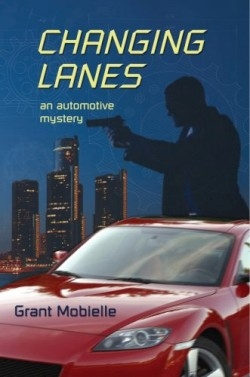Changing Lanes
An Automotive Mystery
Automotive insider Grant Mobielle artfully uses two decades of industry experience to craft a compelling mystery with a believable plot. As unproven technology is increasingly incorporated onto our vehicles, anyone who has ever been hacked, infected by a computer virus, or experienced the dreaded “blue screen of death” could easily imagine a real-life scenario similar to that portrayed in the book.
Tom Greenlea has just retired from AutoMotors Corporation where he was instrumental in developing an innovative vehicle that can practically drive itself. Despite extensive pre-production testing, however, numerous mysterious glitches suddenly surface, causing a number of fatal crashes. If the cause is not rooted out and corrected immediately, these disastrous events could not only kill multitudes of innocent victims, but also destroy the company. Drawn into the intrigue, Greenlea is in for a tumultuous ride as he races to discover the responsible party before anyone else is killed or the company is financially devastated.
Unfortunately, this fascinating plot is not paired with dynamic pacing. The story is watered down by convoluted acronyms, complicated techno-speak, unnecessary narrative, and structural inadequacies. While the writing is truly outstanding in places, a capable content editor is necessary to kick this average tale up to the next level, making it as extraordinary as the author’s periodic flashes of brilliance.
The opening chapter, for example, is entirely superfluous. It describes a family’s preparations for a cross-country trip to Disney World. Undoubtedly designed to give readers sympathy for the Milners’ eventual demise, it is boring and unnecessary. Chapter two, when they finally get on the road should have been the opening sequence. Combined with chapter three, where their vehicle begins to malfunction, this narrative would have been a tremendous beginning, one that really would draw readers into the story. Since there is a touching scene in chapter six just before the crash as the couple fights for control of their vehicle, there’s plenty of opportunity to produce an empathetic response.
The description of the US Department of Transportation Act in chapter ten is also superfluous. While the opening paragraph which recalls President Johnson’s comments may be a relevant piece of historical trivia, the remaining legalese is practicably unreadable. Beyond establishing federal jurisdiction for the forthcoming investigation, it bears little impact on the rest of the story.
Anyone who has worked for a large corporation in a professional capacity can identify with the politics and appreciate the idiosyncrasies of the automotive workplace. Readers who do not share such experiences, however, may find some of these portions a bit tedious. Greenlea’s former boss Marne White plays an important role that needs more work; she comes across as formulaic and unrealistic.
While his execution is uneven, the author’s concept is quite good. His subject-matter expertise and enthusiasm for writing truly shines through. With more experience and a competent editor he should develop into a world-class writer worth following.
Reviewed by
Lawrence Kane
Disclosure: This article is not an endorsement, but a review. The publisher of this book provided free copies of the book and paid a small fee to have their book reviewed by a professional reviewer. Foreword Reviews and Clarion Reviews make no guarantee that the publisher will receive a positive review. Foreword Magazine, Inc. is disclosing this in accordance with the Federal Trade Commission’s 16 CFR, Part 255.

